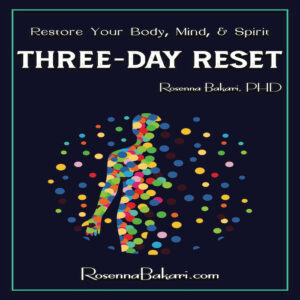The Good Mother

For a long time, mothers have been the brunt of psychology jokes. Most notably, “Mommy Issues” pokes fun at the long-term effects of the problematic relationship between mother and child. Adults who struggle to develop or maintain healthy relationships are teased about their relationships with their mothers.
Meanwhile, the divorce rate is higher than 50%, and single-parent households are even greater. Perhaps we should have more serious conversations about our relationships with our mothers. This article will do just that — have a serious discussion about mommy issues.
I’ll skip most of the research on the subject but will include the references at the end because I’d rather you argue with the research than send me nasty emails for talking about your mother. I know that criticizing the matriarch is a “no, no” in most cultures. So, I’ll tread lightly.
Let’s start by giving mom the credit she deserves with good humor.
Question: Why is a computer so smart?
Answer: Because it listens to its motherboard.
Smart Mothering
Research clearly shows that responding to children’s needs for physical touch, comfort, and safety is essential for brain development. A mother’s response to her infant’s needs sends messages about how that infant should navigate the world.
Brain development has less to do with intelligence and more to do with how children position themselves in the world as they grow into complex interactions with it. As children grow, they will see themselves as acting as agents in the world or victims responding to the world. The mother-child relationship has a more significant effect on emotional intelligence than IQ.
In psychology, the mother-child dynamic is explored through the concept of “attachment.” Attachment refers to the child’s willingness to (1) seek out their mother when distressed. The child must also (2) positively respond to the mother’s attempt to comfort. When both these conditions are met, a child is considered “securely attached.”
Mothers have a critical post-partum responsibility. Getting children here is not enough and deserves no accolades. What mothers do after their children arrive matters most. Mother and child must become a synchronized pair for children to have the best adult outcome.
The perfect pair between mother and child is a mirroring relationship where they work in tandem. When the mother smiles, the baby smiles. A whimper from the baby triggers nurturance from the mother. She checks for a soiled diaper, upset tummy, etc. This bonding strengthens into toddlerhood and beyond to make children feel safe and loved.
Childhood Interrupted
The ideal mother-child bond allows infants to take risks and use mothers as a soft landing when things go wrong. As children grow, the trust between mother and child is extended, first to family members and eventually to the world. If someone breaks the child’s trust, the mother should still be a soft landing to repair the child’s worldview.
Unfortunately, well-intentioned mothers can contribute to a child’s mistrust and prevents risk-taking. Inadequate care can be passed down unwittingly through generations.
Skin-to-skin contact, tone of voice, responsiveness to discomfort, number of words exchanged, nonverbal expressions of acceptance, and meeting basic needs are required to bond in the first year of life. Feeling love for a child is not adequate care.
When a child must find alternative soothing, emotional dysregulation occurs. When a child doesn’t have practice making mistakes without consequences, they don’t learn how to take risks. Many children don’t have practice trusting themselves or others.
Bonding Distress
Mother-bonding distress extends beyond infancy. Many adults have had a childhood that never felt “childish.” They were always expected to make life convenient for adults around them. For example, three-year-olds can’t get their clothing dirty without punishment. Six-year-olds wash dishes every night while the mother takes care of the baby brother. Ten-year-olds call their mom’s job to report that she is sick when she has a hangover.
The scenarios are endless where children’s psyches are thrust into the adult world. Toddler narcissism is never tolerated. Preschool naiveté is scorned, and teenage independence is thwarted. Instead of children being born into a world that revolves around their needs, they are born into a world that requires them to master adults’ needs.
Many children grow into adults who have learned to survive in the external world but not thrive in their inner world. They don’t know how to respond to internal stimuli because they have been reared to focus on what is happening around them, not inside them. The consequence is “disorganized attachment” in relationships. Adults struggle with relationships when, as children, their inner experiences are ignored by their caregivers.
Permission to Heal
If this information resonates with you, the answer is “yes.” You can blame your failed relationships on your mother. However, once you recognize the problem, you cannot hold her accountable for repairing your worldview. Blaming your mother for your current choices will not move you forward.
This article does not seek to validate a desire to blame your mother for your life dissatisfaction. Rather, the information is an invitation to heal what you didn’t recognize was wrong.
Many adults live with the illusion that their mothers “raised them well.” Society associates success with good parenting. Success denies adults the right to process how they were raised.
Abracadabra, physical abuse is remembered as developing discipline. Emotional abuse is marked as high standards and preparing children for the real world. Neglect is spoken about as freedom to explore. On the other hand, childhood survival methods such as running away are remembered as defiance.
Successful adults are obligated to show gratitude toward their mothers. Only the ungrateful criticizes their mother. Holding mothers accountable is hardly worth the backlash from relatives and strangers. After all, a mother is the reason we are all here.
Maybe you have given your mother a pass on everything at the expense of healing your disorganized attached relationships. You don’t have to do so. You can live in your truth and still extend compassion, forgiveness, or grace to your mother. But, you get to grieve what you didn’t have and acknowledge the impact on your life.
Relationship Distress
Disorganized attachment is an attachment that is accompanied by fear and anxiety. Someone with disorganized attachment can love someone and distrust them without cause. The disorganized attachment person may demand their loved one be in close physical proximity while remaining emotionally disengaged. In general, people who have disorganized attachment don’t feel emotionally safe in relationships.
The distress in relationships comes from within the person. However, they do not have the psychological experience to respond to internal stimuli. So, they manifest the distress externally to react to it. There are common characteristics of how disorganized attached individuals show up in relationships.
- You have difficulty admitting you were wrong.
- Apologizing brings a sense of shame.
- You are highly observant of others’ behavior and the environment.
- Being disappointed profoundly affects you.
- You are highly critical of your partner.
- Receiving feedback makes you defensive.
These characteristics do not necessarily determine the success or failure of relationships, and they are offered for personal deliberation, not for you to accuse someone of having disorganized attachment. It’s common for persons with disorganized attachments to attract one another. So, it’s best to pluck the beam from your own eye.
Mother’s Love
All relationships require consistency, predictability, and reliability to flourish. Even adults who were not adequately bonded as children could thrive if they find consistency, predictability, and reliability in relationships.
However, people who have not experienced adequate bonding may not know to look for healthy characteristics. If they have trouble expressing healthy traits, they have difficulty finding them in others.
Our mother, our first love, teaches us the expectations of love. To the degree that our mother showed up as inconsistent, unpredictable, or unreliable, we may attract partners that trigger our emotional responses learned from our mother.
If you were angry with your mother a lot, you are likely to respond to your partner with anger. If you were passive to remain safe with your mother, you would likely be passive with your partner to earn their love.
How you attempted to feel love from your mother is likely to be how you try to feel love in your relationships. The dominant feelings between you and your mother may predict the prevalent feelings you have in your love relationship.
Too Young to Remember
You are unlikely to know how your mother bonded with you as an infant since conscious memories tend not to go back to infancy. From the time you can remember, life in your family was just how the world worked. Your brain patterns formed too early for you to expect that life should be different.
You may not remember how you became so disciplined or compassionate toward others. For all the great qualities you attribute to your childrearing, they don’t help you secure adult relationships. How is it that so many brilliant, kind, disciplined people can’t find or keep life partners long enough to raise their offspring together? Adult relationship success begins in infancy, long before couples meet.
One research study concluded that mothers who had experienced childhood sexual abuse gave birth to newborns with emotional dysregulation (Martin et al., 2022). Plotka & Busch-Rossnagel (2018) found that mothers who took longer maternity leave showed a higher quality of bonding with their infants. Choi & Kim’s 2016 research showed that middle schoolers with high parental attachment had better school-life adjustment.
In adulthood, we tend to create experiences that confirm our childhood beliefs about love bonds and relationships. You must earn love, or you are unlovable. You must take care of the people who love you, even if doing so causes you harm. Disagreements are a threat to love, so you must seek validation. People who love you owe you something, and vice versa.
Showing up to relationships with such fragile beliefs and characteristics of disorganized attachment is inevitable dissatisfaction. Money, education, life experience, or social status have some protective value, but even in the elite world, uncoupling is a growing trend. Is the life-long commitment going out of style, or are we passing down generational wounds? Maybe both.
Reorienting Attachment
Attachment styles are challenging to change but not impossible. Shifting to a healthy attachment style requires changing beliefs and actions and strengthening emotion regulation. Disorganized attachment cannot shift by confronting your mother, holding her responsible for your outcomes, or avoiding her. You must engage in the transformation work of making relationships conscious.
When you make relationships conscious, you take responsibility for who shows up in your life and how they show up. You spend time with people by choice, not as a victim of circumstance. You don’t open the door for everyone who knocks on your heart. You live by design and invite people in your life who align with your design.
Relationships are not based on a requirement for permanence. People can come and go based on the human value they bring to your life. As long as they support your best self, they remain. You don’t dim your light to keep people in your life.
To establish trust, life partners should offer predictable, reliable, and consistent love. It will be more difficult to develop healthy attachments to the degree they don’t. These relationship characteristics cannot be substituted for wealth and grand gestures.
Predictability is knowing where you stand in the relationship. You don’t have to guess when you will spend time with the person or what type of mood they will be in when you are together.
You can predict because the person is reliable. They follow through on what they agree to do for you. They may not follow through on what you want them to do. But, what they claim to do, they will.
Self-regulation is critical when people don’t show up the way you expect. You must evaluate whether your expectation or the person’s behavior is out of alignment.
Consistency is having regularity in the relationship. Shifting into healthy attachment may be more difficult in occupations that don’t support relationship consistency, such as acting, doctors, or professions that require a lot of travel. Partners must find a way to tend to each other’s emotional needs even when they are not physically available.
Emotion Regulation
Regulating emotions is brain and heart work that must be done independently of current relationships. Developing healthy attitudes and beliefs about love requires self-examination. Paying attention to self doesn’t come easy to adults who survived childhood by mastering their external environment.
Ironically, external prompts may be required to master the internal environment. Yoga, guided meditation, and creative arts support developing consciousness. Prompts invite you to pay attention to the inner experiences that typically go unnoticed but are related to emotional regulation. Attention is directed to breathing, pulse rate, and thoughts without being attached to them.
Beliefs and attitudes are regulated by learning to apply neutral values to experiences. For example, when someone gives negative feedback, a disoriented attached person may experience sadness and anxiety because they cannot distinguish between the feedback about their work and self. Developing emotional regulation helps them depersonalize so they can respond with less emotion.
Emotion regulation work is challenging to do on your own. Professional intervention will help you see clearer and address your beliefs faster than figuring them out independently. You must commit to the work without judgment. See yourself with compassion so you don’t feel too vulnerable in the world. You are not trying to fix yourself. You are continuing your development.
References
Bowlby, K. (April 28, 2022). 52 funny mom jokes that will have her cracking up. Country Living. https://www.countryliving.com/life/a32404390/mom-jokes/
Choi, K., & Kim, M. (2016). Influence of maternal attachment on adolescents’ adjustment as perceived by middle school students: The moderation effect of paternal attachment. Korean Journal of Child Studies, 37(3), 27–38. https://doi.org/10.5723/kjcs.2016.37.3.27
Cortes Hidalgo, A. P., Muetzel, R., Luijk, M. P. C. M., Bakermans-Kranenburg, M. J., El Marroun, H., Vernooij, M. W., van IJzendoorn, M. H., White, T., & Tiemeier, H. (2019). Observed infant-parent attachment and brain morphology in middle childhood– A population-based study. Developmental Cognitive Neuroscience, 40, 100724–100724. https://doi.org/10.1016/j.dcn.2019.100724
Gratz, K. L., Kiel, E. J., Latzman, R. D., Elkin, T. D., Moore, S. A., & Tull, M. T. (2014). Emotion: Empirical contribution, maternal borderline personality pathology, and infant emotion regulation: Examining the influence of maternal emotion-related difficulties and infant attachment. Journal of Personality Disorders, 28(1), 52–69. https://doi.org/10.1521/pedi.2014.28.1.52
Little, K. K., & Sockol, L. E. (2020). Romantic relationship satisfaction and parent-infant bonding during the transition to parenthood: An attachment-based perspective.Frontiers in Psychology, 11, 2068–2068. https://doi.org/10.3389/fpsyg.2020.02068
Martín, N. S., Quintas, Á. C., Daura-Corral, M., Feixa, L. M., Eixarch, E., Crispi, F., L De La Fuente Tomas, Garcia-Portilla, M. P., & Fañanas, L. (2022). Childhood and recent maternal adverse experiences and mother-infant attachment influence early newborns’ neurobehavioural profiles. European Psychiatry, 65(S1), S144-S144. https://doi.org/10.1192/j.eurpsy.2022.389
Norholt, H. (2020). Revisiting the roots of attachment: A review of the biological and psychological effects of maternal skin-to-skin contact and carrying of full-term infants. Infant Behavior & Development, 60, 101441. https://doi.org/10.1016/j.infbeh.2020.101441
Plotka, R., Busch-Rossnagel, (2018). The role of length of maternity leave in supporting mother–child interactions and attachment security among American mothers and their infants. ICEP 12, 2. https://doi.org/10.1186/s40723-018-0041-6
Tang, A., Almas, A., Zeytinoglu, S., Zeanah, C. H., Nelson, C. A., & Fox, N. A. (2021). Long‐Term effects of institutional care and enhanced attachment relationships on close adolescent friendships. Child Development, 92(6), 2431–2446. https://doi.org/10.1111/cdev.13592
Tee-Melegrito, R.A. (October 30, 2022). What to know about mommy issues. Medical News Today. What to know about Mommy Issues. https://www.medicalnewstoday.com/articles/mommy-issues
Zagefka, H., & Bahul, K. (2021). Beliefs That Contribute to Dissatisfaction in Romantic Relationships. The Family Journal, 29(2), 153–160. https://doi.org/10.1177/1066480720956638




